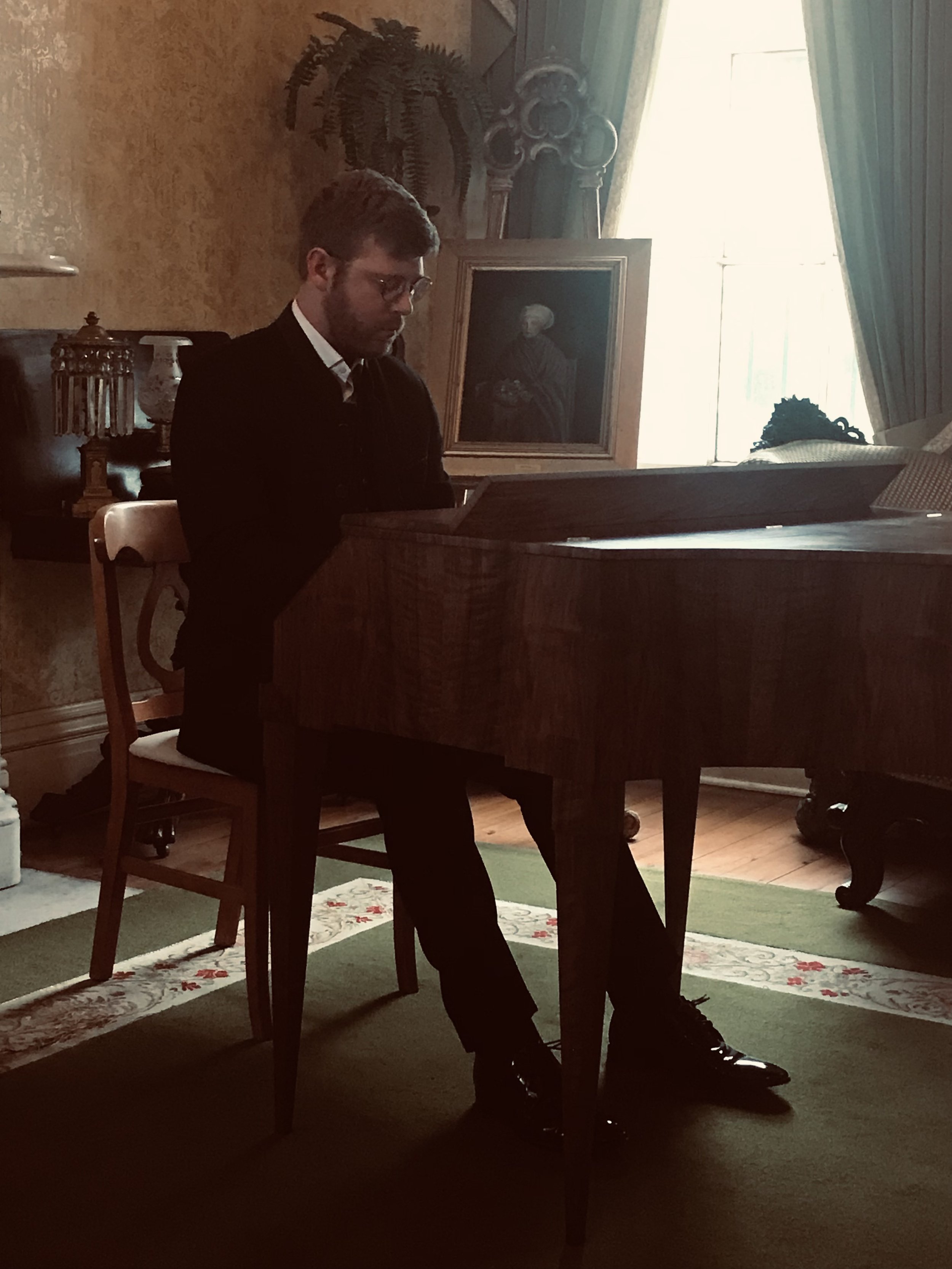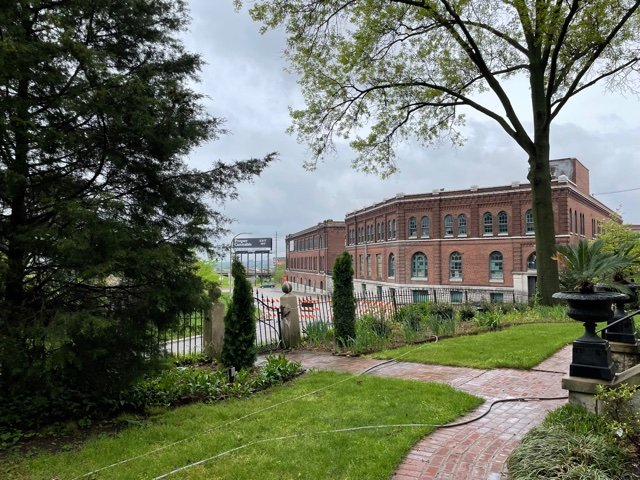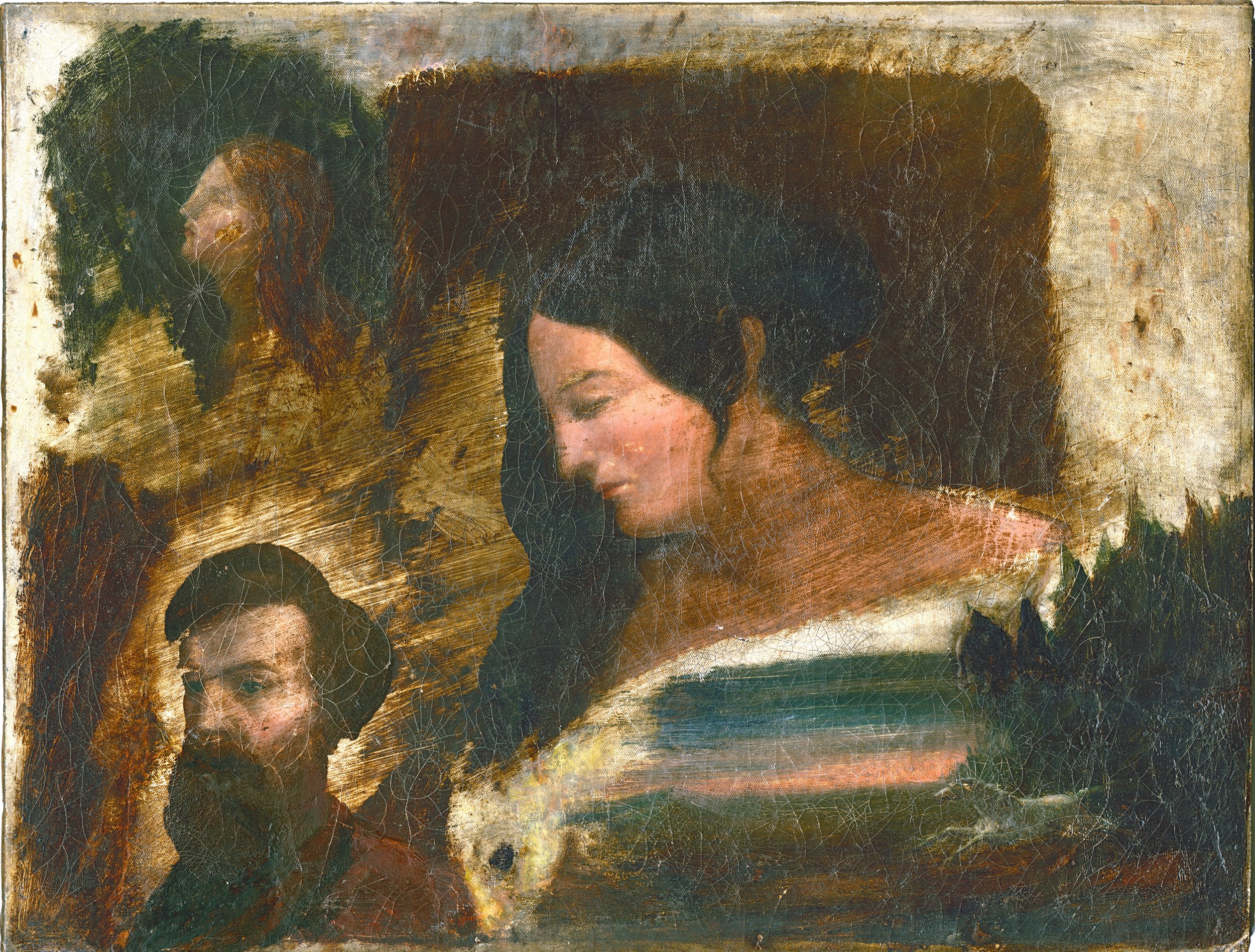Chatillon's Bend to the Saluda Exchange
In 1848 Henri Chatillon, recently returned a widower from guiding Francis Parkman on his Western exploration published as The Oregon Trail, married the widow Odile Lux and together they built a Creole style brick farmhouse in 1850 on twenty-one acres stretching down to the river. Life on the hill overlooking the Mississippi River at what became known as Chatillon’s Bend, south of St. Louis, while comfortable, must have felt like a gilded cage compared to the freedom of the frontier. Gone was the thrill of the hunt and the camaraderie of fellow trappers around a campfire.
The farmhouse at Chatillon’s Bend
In 1856 French born Doctor Nicolas DeMenil and his business partner Eugene Miltenberger bought the farmhouse and land, fueling the Chatillons' new adventure as the landlords of a tavern located at 26 South Levee St., in the heart of the St. Louis waterfront, not far from Odile’s late husband’s fifteen room residence/store on 4th, north of Almond, according to the 1845 Green's Directory. We can imagine that Henri (if not Odile) saw potential – a chance to recreate the western camaraderie he missed at Chatillon's Bend, albeit in a different form.
Henri poured his energy and Odile’s savings into the tavern, transforming it into the Saluda Exchange. The simple interior of number 26 was most likely adorned with worn maps, animal hides, and trophies from his past trips out west. The air thrummed with the lively chatter of travelers, explorers, and locals seeking solace or a raucous evening.
The Saluda Exchange became a place where toasts were exchanged, friendships forged, and dreams ignited.
Henri Chatillon may have traded his farmhouse for a tavern, but he never truly left the frontier.
Alexander DeMenil's Office Building
The DeMenil Building was financed and built by Alexander Nicolas DeMenil when he was 45 years old. The architect was Isaac Taylor, who also designed elements of the 1904 World’s Fair (of which Alexander was a director), the Globe Democrat Building, the Public Library, and the Planters’ Hotel.
Known about St. Louis as a writer, politician, lawyer, and publisher of the first literary magazine west of the Mississippi, The Hesperian, Alexander was a direct descendant of Marie-Thérèse Bourgeois Chouteau, a founder of the city. Built next to the Wainwright Building, Alexander’s seven story Romanesque building became home to tenants as diverse as St. Louisans of the Guilded Age: lawyers, dentists, architects, and engineers. Ads for the office building in The Hesperian promoted its fireproof design, hot and cold running water, and commodious office spaces, as well as electric heat.
Image Courtesy: Missouri Historical Society
The DeMenil was a smaller cousin of the Wainwright building, and, when investigating the ultimate conversion of the Wainwright to a Missouri State office building, the DeMenil was passed over as non-historic, even though it qualified as worthy of the National Register. The Wainwright, an early skyscraper, is perhaps the most architecturally remarkable building in St. Louis’ once vibrant downtown. One of architect Louis Sullivan’s early works designed and built during the period he employed Frank Lloyd Wright as a draftsman, the Wainwright and its younger cousin, the DeMenil, became centerpieces of Real Estate Row, at Seventh and Chestnut streets.
Alexander DeMenil’s office building was demolished in 1976, about the same time as the Chatillon-DeMenil's Carriage House was expanded and modernized to include a restaurant.
Restoring Restroom and Pantry After 16 Burst Pipes
Winter's icy grip can wreak havoc on historic houses, and unfortunately, that's exactly what happened to the back pantry and restrooms in the mansion during the Christmas season over a year ago. A late December freeze paired with a furnace failure caused 16 pipes to burst between the 1st and 2nd floors, sending a torrent of water flooding the pantry and restrooms. The once functional and inviting spaces were left with warped flooring and crumbling plaster. The outside walls of the restrooms were discovered to have been plastered directly on the outer course of brick. No lath or insulation!
The first step involved the demolition of the affected areas. Removing the damaged plaster and flooring was essential to prevent mold growth and allow for proper drying and damage assesment.
Once the space was dry and opened up, the rehabilitation began. The Restoration Committee opted for white and black 19th century style tile flooring in both the pantry and bathrooms. They also set up the domestic water supply so that it could be drained during the winter months when the mansion is closed.
Beyond the functional necessities, the Committee incorporated some design upgrades. They replaced the outdated domestic toilet with a commercial handicap accessible model. In the pantry, they installed the old shelving but new cabinets for a donated dishwasher and a larger sink that improves storage space, creating a more organized environment. A donated refrigerator/freezer now adds another layer of convenience to the pantry.
The final step reflecting the Committee's sense of style added a fresh coat of paint in pantry, hallway, and restroom, along with reproductions of the original baseboards, warped by the deluge, breathing renewed life into the space.
West Visitor's Entrance: 2024 Annual Appeal
Standing sentinel for almost half a century, the cast iron and limestone West entrance gate to the mansion whispers stories of a bygone era. Yet, time and the elements have taken their toll, leaving their mark on its once-proud form. To ensure this gateway to the past remains a testament to history, immediate renovations are crucial.
The intricate ironwork, likely forged in a foundry long since shuttered, has resisted aging to a large degree; however, the elegant limestone pillars flanking the gate and its steps haven't escaped the ravages of time. Especially hard hit have been the side walls flanking the steps which have suffered the freezes and thaws of almost four decades of winters.
Dedicated in 1981 to the chief motivator of the mansion's restoration, Chapin S. Newhard, the gates' excessive cracking, spalling (flaking of the surface), and settling of the pillars necessitates intervention. Historic stone masons have been consulted to evaluate the extent of damage and recommend appropriate restoration techniques, including partial or full stone replacement. The projected cost of the restoration will be approximately $20,000.
The gate's functionality also demands attention. Over time, the hinges (set into the limestone with lead) have become misaligned, causing the gate to sag and stick. Realignment and resetting of the hinges is necessary to ensure continued smooth operation.
Restoring the historic gate is not just about aesthetics and public safety; it's about preserving a piece of the community's heritage. By addressing the challenges posed by time and the elements, we ensure this gateway continues to welcome visitors and serve as a silent storyteller, enriching the experience of the mansion and its surroundings.
An amount of money has been set aside by the Foundation as matching funds, a common practice in the world of restoration projects. The Foundation will provide a portion of the funding for the project, but we need to have our members and friends to donate the remaining funds. This means the Foundation will provide a dollar for every dollar raised by the appeal. This ensures that the project has broad support and that the recipients have a significant financial stake in its success.
This year's Annual Appeal will focus on the West Gate Restoration, and a second plaque will celebrate the new generation of donors whose generosity make the 2024 restoration possible.

























